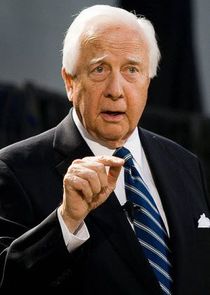The first woman to fly solo across the Atlantic, Amelia Earhart was one of America's first celebrities. After only a few years as a pilot, she became the best-known female flier in America, not only for her daring and determination, but also for her striking looks and outspoken personality. Amelia even had an uncanny resemblance to Charles Lindbergh — the most famous man in America at the time — that publicists seized upon, nicknaming her "Lady Lindy." Three weeks short of her 40th birthday, Earhart disappeared over the Pacific Ocean, and her story became legend.
Amelia Earhart was raised to be a proper Victorian woman but decided early on that was a role that did not suit her. Amelia collected newspaper articles and pictures of successful women in male-dominated fields such as film, law, management, and engineering. Unsure of her own direction, Amelia moved between various schools and jobs. At 23, however, Amelia Earhart discovered her passion at an airfield when she paid $5 for her first ride in a biplane. "As soon as we left the ground," she later wrote, "I knew I myself had to fly. 'I think I'd like to fly,' I told the family casually that evening, knowing full well I'd die if I didn't."
To raise money for her own plane — a yellow Kinner Airster biplane she named The Canary — Amelia worked as a truck driver, photographer, and stenographer. In 1921, she passed her pilot's test from the National Aeronautic Association and received her license two years later from the Fédération Aéronautique Internationale, all while flying in races and setting an unofficial altitude record for female pilots.
In 1928, Earhart gained international fame after becoming the first female passenger to fly across the Atlantic on the Friendship with pilot Wilmer Stultz and co-pilot Louis Gordon. After writing a bestselling book about the experience, Amelia's celebrity exploded. With publicist George Palmer Putnam — who would become her husband — Amelia planned a nationwide book tour and endorsed dozens of products. Still, she did not feel deserving of all the acclaim. "I was just baggage, like a sack of potatoes," she claimed about her famous trip. Only in 1932, after Amelia Earhart flew across the Atlantic Ocean solo, did she feel she had earned her lavish praise.
Though she was only the second person in the world to accomplish this (after Lindbergh), Amelia Earhart did not slow down. Through the 1930s, she broke more flying records, wrote another book, promoted commercial airlines, and worked as a lecturer, career advisor to female college students, and Aviation Editor at Cosmopolitan Magazine.
In 1937, Amelia decided to go for the one record in aviation no one, man or woman, had ever attempted before — to fly around the world at the equator. A perilous and unprecedented flight, it required months of preparation and a lot of luck. In the end, Amelia had neither. Exhausted from a grueling schedule of promotions, speeches, and interviews, Amelia Earhart took off from Florida, making it all the way to New Guinea. After a few days rest, Amelia continued on, only to lose radio contact while trying to locate and land on the tiny Howland Island in the middle of the Pacific. On July 2, 1937, Amelia Earhart and her navigator Fred Noonan disappeared without a trace after nearly 22,000 miles into the around-the-world flight.
Amelia Earhart was adored because she was daring and successful in a man's world and because she was magnificently promoted in the press and newsreels of the time. In the end, her courage cost her her life, but her groundbreaking contributions to flight and women's struggle for equality made Amelia Earhart an enduring American hero.








Kathy Bates is the episode narrator listed in the opening credits.